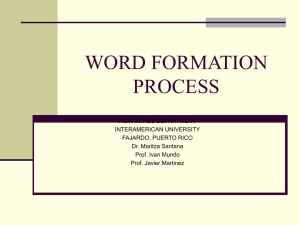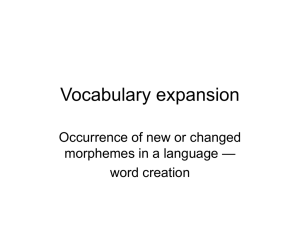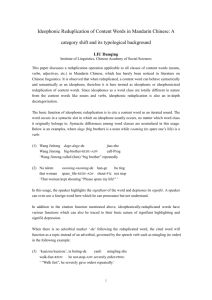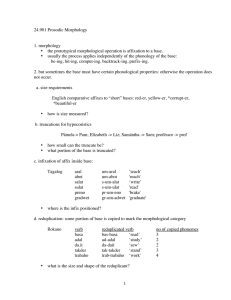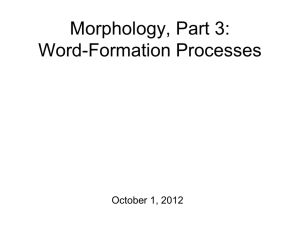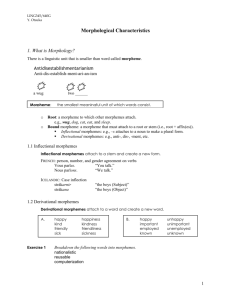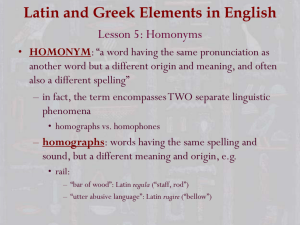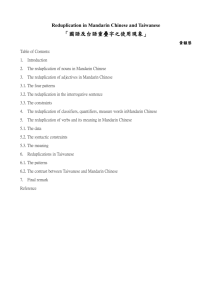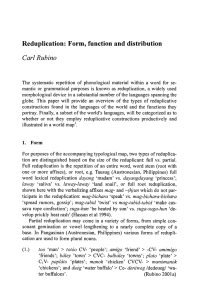Document 13413798
advertisement
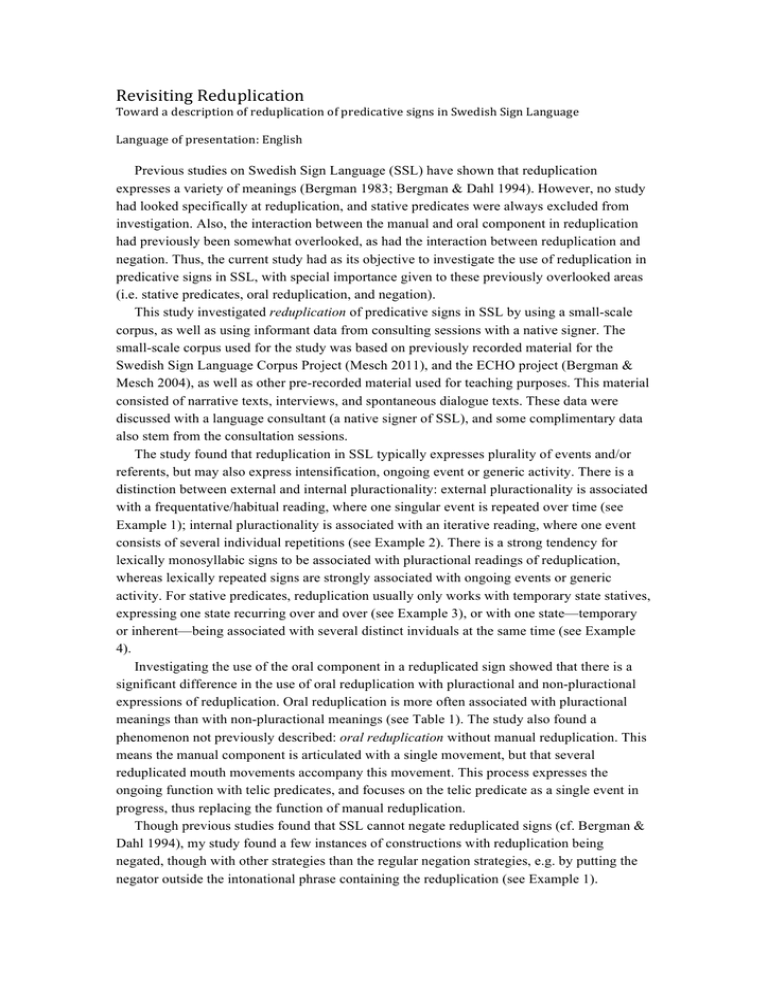
Revisiting Reduplication Toward a description of reduplication of predicative signs in Swedish Sign Language Language of presentation: English Previous studies on Swedish Sign Language (SSL) have shown that reduplication expresses a variety of meanings (Bergman 1983; Bergman & Dahl 1994). However, no study had looked specifically at reduplication, and stative predicates were always excluded from investigation. Also, the interaction between the manual and oral component in reduplication had previously been somewhat overlooked, as had the interaction between reduplication and negation. Thus, the current study had as its objective to investigate the use of reduplication in predicative signs in SSL, with special importance given to these previously overlooked areas (i.e. stative predicates, oral reduplication, and negation). This study investigated reduplication of predicative signs in SSL by using a small-scale corpus, as well as using informant data from consulting sessions with a native signer. The small-scale corpus used for the study was based on previously recorded material for the Swedish Sign Language Corpus Project (Mesch 2011), and the ECHO project (Bergman & Mesch 2004), as well as other pre-recorded material used for teaching purposes. This material consisted of narrative texts, interviews, and spontaneous dialogue texts. These data were discussed with a language consultant (a native signer of SSL), and some complimentary data also stem from the consultation sessions. The study found that reduplication in SSL typically expresses plurality of events and/or referents, but may also express intensification, ongoing event or generic activity. There is a distinction between external and internal pluractionality: external pluractionality is associated with a frequentative/habitual reading, where one singular event is repeated over time (see Example 1); internal pluractionality is associated with an iterative reading, where one event consists of several individual repetitions (see Example 2). There is a strong tendency for lexically monosyllabic signs to be associated with pluractional readings of reduplication, whereas lexically repeated signs are strongly associated with ongoing events or generic activity. For stative predicates, reduplication usually only works with temporary state statives, expressing one state recurring over and over (see Example 3), or with one state—temporary or inherent—being associated with several distinct inviduals at the same time (see Example 4). Investigating the use of the oral component in a reduplicated sign showed that there is a significant difference in the use of oral reduplication with pluractional and non-pluractional expressions of reduplication. Oral reduplication is more often associated with pluractional meanings than with non-pluractional meanings (see Table 1). The study also found a phenomenon not previously described: oral reduplication without manual reduplication. This means the manual component is articulated with a single movement, but that several reduplicated mouth movements accompany this movement. This process expresses the ongoing function with telic predicates, and focuses on the telic predicate as a single event in progress, thus replacing the function of manual reduplication. Though previous studies found that SSL cannot negate reduplicated signs (cf. Bergman & Dahl 1994), my study found a few instances of constructions with reduplication being negated, though with other strategies than the regular negation strategies, e.g. by putting the negator outside the intonational phrase containing the reduplication (see Example 1). Example 1: Example 2: Example 3: Example 4: Table 1: The distribution of oral reduplication for different meanings Pluractionality Ongoing event Generic activity Intensification TOTAL No oral reduplication 54 39 22 7 122 Oral reduplication 46 6 2 0 54 TOTAL 100 45 24 7 176 References Bergman, Brita. 1983. Verbs and adjectives: Some morphological processes in Swedish Sign Language. In: Kyle, James & Woll, Bencie (eds.). 1983. Language in sign: An international perspective on sign language, pp. 3-10. Dover, NH: Croom Helm Ltd. Bergman, Brita & Dahl, Östen. 1994. Ideophones in Sign Language? The place of reduplication in the tense-aspect system of Swedish Sign Language. In: Bache, C., Basbøll, H. & Lindberg, C.E. (eds.). Tense, Aspect and Action. Empirical and Theoretical Contributions to Language Typology, pp. 397-422. New York, NY: Mouton de Gruyter Bergman, Brita & Mesch, Johanna. 2004. ECHO data set for Swedish Sign Language (SSL). Department of Linguistics, University of Stockholm. URL: http://www.let.ru.nl/signlang/echo Mesch, Johanna. 2011. Swedish Sign Language Corpus Project. Department of Linguistics, Stockholm University. Copyright terms: http://creativecommons.org/licenses/by-ncsa/2.5/se/deed.en
